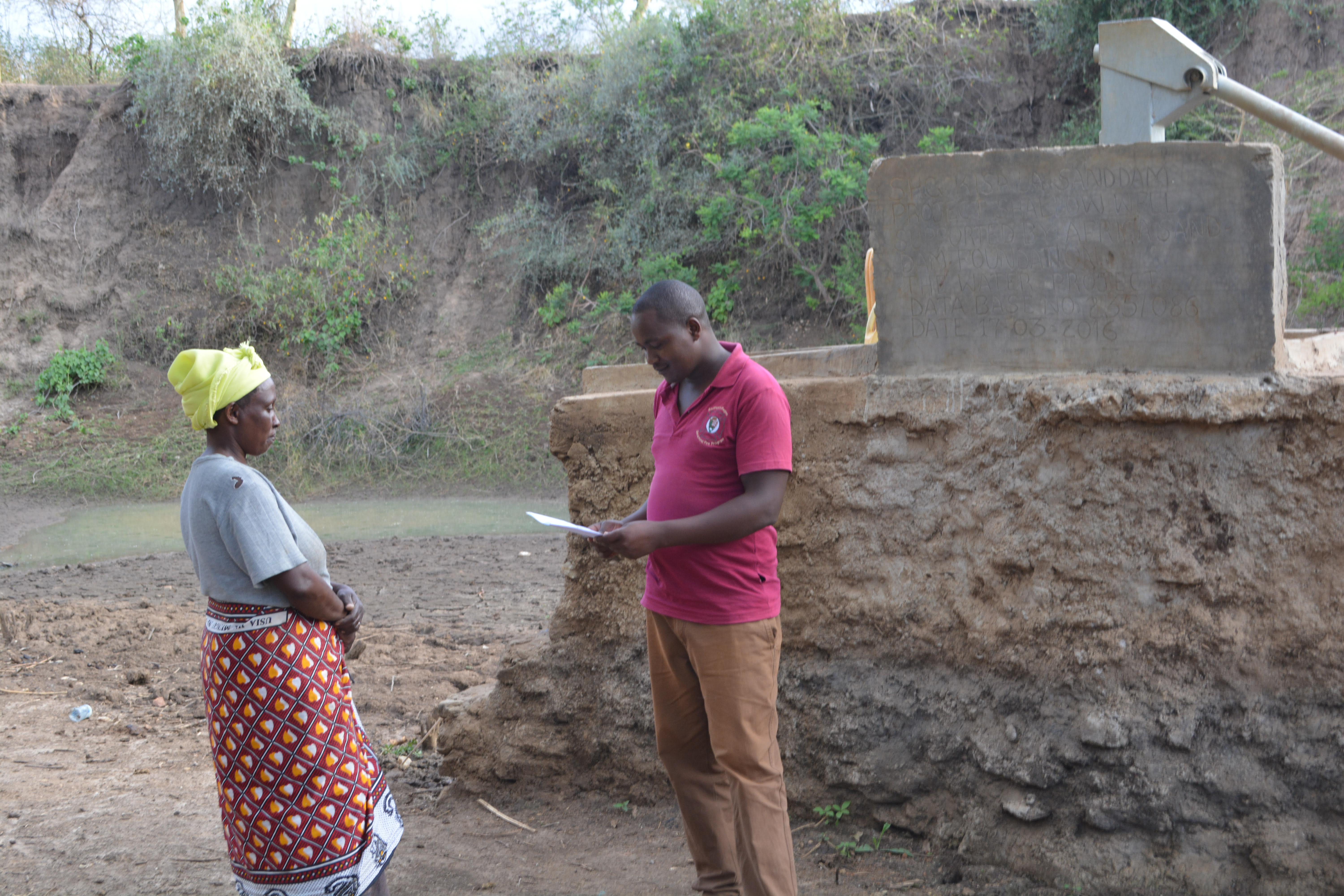A Year Later: Kisaila Sand Dam

A year ago, generous donors helped build a sand dam for the Kisaila Self-Help Group in Kenya. Because of these gifts and our monthly donors, partners are able to visit project sites throughout the year, strengthening relationships with communities and evaluating the actual water project. These consistent visits allow us to learn vital lessons and hear amazing stories – we’re excited to share this one from our partner Titus Mbithi with you.
Life for people living near this sand dam has greatly improved because they now have a clean water source that runs throughout the year. They have used the water at their homes, establishing kitchen gardens and making bricks. The vegetables planted at home are used for consumption, while any excess is sold to their neighbors. The money received and saved from these sales is used to pay other bills. The surrounding environment has become more serene, and the people are happy, healthy and clean. The water from this sand dam has even assisted them in constructing their second dam this year.
And thanks to the surplus of water this sand dam provides, the adjacent well is able to pump clean, safe water from the catchment area.
Anne Ngei is the chairwoman of the committee that oversees this dam and well system. She said, "Due to the water, we have established vegetable plots which provide us with vegetables, and our meals have increased from two meals a day to three meals. We have planted fruit trees as well as timber trees which give us income from selling firewood. Even the firewood we get from pruning the trees, as we were trained. Soon the fruit trees will be giving us fruits for selling and our own consumption. The tree survival rate has increased... Our school-going children no longer stay dirty because water is available, and they are usually comfortable in school and even in the church. Diseases have decreased due to improved nutrition, which came as a result of planting different varieties of foods and vegetables."
Levi Mwnedwa was also there to fetch water. He said, "My school performance has improved because I find food at home, unlike before. I could come home only to find my grandmother has gone to look for water from as far as five kilometers away from our home. She could later come home late, and sometimes without water. When she would come home without water, this meant that we slept without cooking... but since the project inception, I find food ready. This enables me to eat, do my homework, then sleep early. My teachers have also commented on my performance and concentration in class and I am aiming to achieve higher marks in my next class. My grandmother and I have grown 14 trees, and they have all survived. We are planning to transplant during the rainy season. I use the water to bathe, wash my clothes, and our house. As a result I am now clean and healthy. Our livestock are healthy, and they produce good milk."
The surrounding environment has become green and cool. Soil and water are conserved through natural vegetation and terracing. Water is available throughout the year, and is being enjoyed by hundreds.
The Water Project and our partners are committed to consistent monitoring of each water source. Our monitoring and evaluation program, made possible by monthly donors, allows us to visit communities up to four times a year. Read more about our program and how you can help.
See The Water Project in Anne Ngei's Community »


